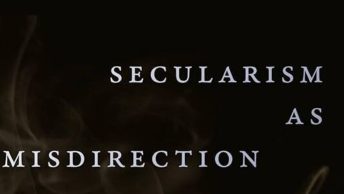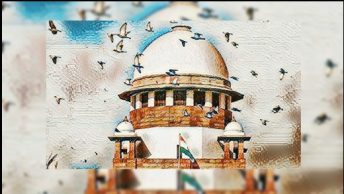[Ed Note: We’re happy to report the release of Vol 16(1) of the Socio-Legal Review. We’re grateful to Shannon Khalkho for having taken the initiative to reach out to us and to Mugdha Mohapatra for authoring the note below.]
The Socio-Legal Review (‘SLR’) is a bi-annual, open access, student-edited, peer-reviewed, interdisciplinary journal run by the students of the National Law School of India University, Bangalore, and published by the Eastern Book Company (EBC). This post introduces the articles in volume 16(1) of the Journal. The focus of these articles ranges from pertinent constitutional issues to pressing criminal law problems. Each article provides a distinctive and original lens from which the developments in the Indian and the broader South-Asian context can be analysed.
The articles can be accessed at https://www.sociolegalreview.com/archive.
- A Right To The Indian City? Legal And Political Claims Over Housing And Urban Space In India —Mathew Idiculla
The author, through this piece, provides an articulation of the “right to the city” in light of the decision of the Delhi High Court in Ajay Maken v. Union of India (W.P.(C) No. 11616/2015). The author provides a theoretical framework which sees this right as a “collective call for action”, a method of “radical restructuring” and “social reform”. The author characterizes this right not as a legal right to be enforced in a court of law, but as a political claim to the city. He provides an overview of the international movements recognizing this right. In the Indian context, the author observes that courts had recognised the right to housing under the right to life. But the courts have always balanced this against the needs of good governance and planned development, where those who work in the city are also the nuisance that must be fixed. In this context, the decision in Ajay Maken marks a paradigm shift by recognising the obligations the state has in the evictions and displacement of such citizens.
This research provides a theoretical framework to reimagine the right to shelter not just as a facet of the right to life but as a precondition to citizenship. Current scholarship has focused upon legal methods to realise this right but the author here explores political and practical ways to make this right meaningful.
 2. Coexistence And Violence: The Case For Equality Of Opportunity In Sri Lanka —Gehan Gunatilleke
2. Coexistence And Violence: The Case For Equality Of Opportunity In Sri Lanka —Gehan Gunatilleke
In this article the author analyses the interconnection between the lack of equality and the impact that widening inequality has had on the increase in violent conflict in Sri Lanka. The author provides a detailed sociological and historical inquiry of the entrenched inequalities, created due to language differences, socio-economic disadvantages, and religious fanaticism. Furthermore, he examines the constitutional promise of equality in Sri Lanka and points out to the problematic manner in which this equality can be restricted. The author argues that despite the promise of formal equality, there has been a failure to ensure substantive equality in Sri Lanka. The author identifies three causes for this failure: entitlement complexes, existential fears, and institutional decay and explains how these perpetrate a culture of violence. The author recommends constitutional and policy measures that can be undertaken in order to bridge the language and socio-economic gap in order to prevent inter-community violence.
The analysis of factors obstructing substantive equality and the promise of equality can also be extrapolated to violence in India against minority communities. This research provides not just a theoretical, but also a practical understanding of the manner in which inequality is used to normalise and sustain a culture of violence in any society with complex identities and a fraught history.
- ‘Essential Religious Practices’ Doctrine As A Cautionary Tale: Adopting Efficient Modalities Of Socio-Cultural Fact-Finding —Mary Kavita Dominic
In this paper, the author explores the impact of the ’Essential Religious Practices Doctrine’ (‘ERP’) as a facet of legal pluralism. Here, the author has employed a critical discourse lens in order to highlight the shortcomings of the application of the ERP doctrine. First, she explores the uniquely Indian form of ‘secularism’ and the historical reasons for the involvement of the state in religious matters. This provides the foundation to understand why the ERP doctrine was evolved. The author argues that the ERP doctrine was evolved as a means to give effect to legal centralism as opposed to pluralism. By identifying a core of a religion, which aligns with central norms, the state can ignore religious claims that do not fit within these majoritarian norms. The author argues that the formulation of the ERP doctrine is based upon a textualist interpretation of religious practices which seeks to homogenise incredibly diverse cultures. This prevents the evolution of religions organically and infringes upon their internal autonomy. As a consequence, the political impact of a legal decision is limited.
In this socio-legal context, the author provides an alternative to overcome these shortcomings in judicial decision-making. According to the author, the use of anthropological resources can bridge the gap between the judges and “unfamiliar” religious customs and aid their understanding of religious and customary practices.
This research provides an analytical framework based on which the decisions in the Sabarimala and Triple Talaq cases can be analysed. Even though these judgments have been heralded as progressive, the essentializing reasoning adopted by courts has hardly been analysed. Through a multi-disciplinary approach, the author not only recognizes the dangers and shortcomings of the ERP doctrine but also provides a non-legal alternative to overcome these issues.
- Mob, Murder, Motivation: The Emergence Of Hate Crime Discourse In India—M. Mohsin Alam Bhat
Through this article, the author has drawn attention to the evolving legal framework on ‘hate crimes’ in India. First, the author provides a distinctive theory of hate crimes as a means of individualizing an offence while recognising that such actions are rooted in intergroup conflict. This approach is distinct from a conception of hate crimes as a facet of communal discord, a violation of public order, or an atrocity.
In order to identify the social context that led to the inclusion of hate crimes in the legal discourse, the author analyses the role played by the media, activists, lawyers, and the Government. He focuses on the contributions (or the lack thereof) of each of these actors, towards the collection of hate crime data in India. This helps us understand the causes, limitations, and gaps in the existing data on such offences.
Situating and critiquing the judgment in Tehseen Poonawalla, the author points to the limitations of the paradigm adopted by the Court in framing this issue as a failure of the rule of law and enforcement. However, he notes that the normative grounding in the Court’s ruling stems from the recognition of the social causes of such violence. Using this framework, the author has critiqued the legislative efforts to prevent and punish hate crimes.
This research is of extreme relevance at a time when religious fervour and extremism have gripped this nation. It helps us understand the manner in which the legal system must grapple with the victimization of marginalized communities in order to ensure a meaningful implementation of hate crime laws.
This article is part of the “Notes from the Field” section of the Journal that blends legal analysis with experiences from the ground, in order to provide a comprehensive and informative view of the law.
In this article, the author analyses the impact of the provisions for investigation of Scheduled Offences and for setting up Special Courts, under the National Investigation Agency Act 2008 (‘NIA Act’). This analysis is grounded in an empirical study of the conflict in Bastar, Chhattisgarh. From her empirical study, the author finds that the unchecked use of national security laws and adjudication in Special Courts has led to a violation of the right to a free and fair trial.
Beginning with an overview of the NIA Act and relying upon a conspectus of cases, the author identifies that there is grave lack of clarity on the procedural rules to be followed where the investigation is carried out by the state investigative agency, but are tried in a NIA Special Court. This allows the government to deviate from the protections provided to an accused under the CrPC and adopt the procedures under the NIA act. This problem is particularly acute in a conflict zone like Bastar. Using a variety of quantitative and anecdotal evidences the author provides a complete picture of the impact of the NIA Act in Bastar and provides recommendations to ameliorate this situation.
In January 2020, the Supreme Court had agreed to hear a plea challenging the constitutionality of the NIA Act and the High Court of Chhattisgarh had admitted a PIL on the legal validity of NIA’s Special Courts. This year has also witnessed an increase in the indiscriminate use of anti-terror laws. In this context, the legal and empirical findings and the recommendations in the paper are timely contributions to argue against the misuse of such legislations.






Can you be more specific about the content of your article? After reading it, I still have some doubts. Hope you can help me.
Thank you for your sharing. I am worried that I lack creative ideas. It is your article that makes me full of hope. Thank you. But, I have a question, can you help me?